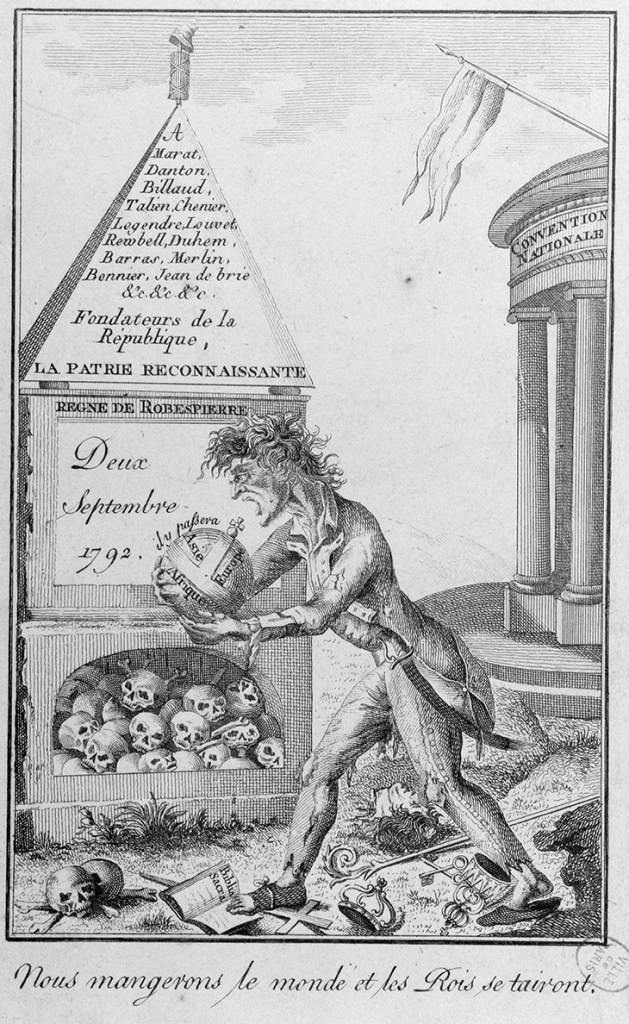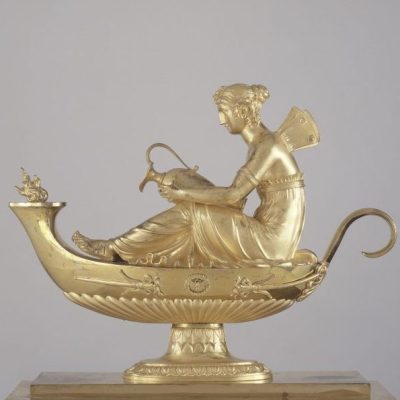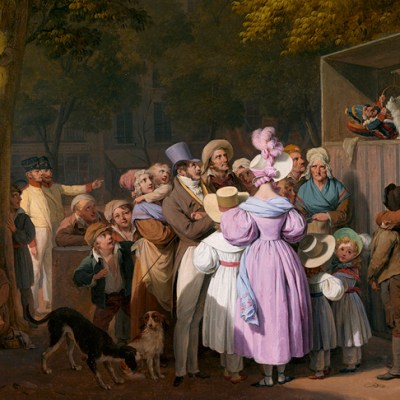The French Revolution has been in the news lately, served as always with a heavy side-order of myth and falsehood. Last month, attempting to justify brandishing firearms at protesters near their home and badly misunderstanding their own historical reference, lawyers Mark and Patricia McCloskey compared a Black Lives Matter march in St Louis to the storming of the Bastille. Meanwhile, the global removal of monuments to enslavers, those who profited from slavery, and known racists has been likened, in ways both positive and negative, to the iconoclasm of the revolutionary decade. In this vein, Keith Christiansen, head of European paintings at the Metropolitan Museum of Art, was criticised for an Instagram post for which he has since apologised, in which he compared the destruction of statues to the actions of ‘revolutionary zealots’; he praised, in contrast, the efforts of Alexandre Lenoir, founder in 1795 of the Musée des monuments français, where sculpture and architectural fragments of the discredited French past were preserved and exhibited.
Whatever one’s perspective, the 1790s seem to offer useful lessons in how we might comprehend the revolutionary tenor of our times. And across all this, the Covid-19 pandemic casts its deathly shadow. Consequently, the widely reported announcement of the discovery of a cache of human bones in the walls of the Chapelle Expiatoire (chapel of atonement) on the rue d’Anjou in Paris seems perfectly timed for our necro-political moment. It has been claimed that four wooden ossuaries found by the chapel’s administrator and examined by an archaeologist within the walls of the building may contain the remains of up to 500 people guillotined during the Terror, potentially those of prominent revolutionaries such as Maximilien Robespierre and Olympe de Gouges, as well as numerous predominantly aristocratic victims of the Terror.
Alexandre Lenoir opposing the destruction of the mausoleum of Louis XIII at Saint-Denis, October 1793 (1793), Pierre Lafontaine. Paris Musées/Musée Carnavalet. (CC0)

The Chapelle Expiatoire was designed and built between 1815 and 1826 by Pierre-François-Léonard Fontaine to commemorate Louis XVI and Marie-Antoinette, who had been executed in 1793. The chapel was the only freestanding structure Fontaine – best known for his collaboration with Charles Percier during the revolution and First Empire – completed on his own. No supporter of the Revolution, Fontaine’s career had nonetheless been shaped by it. Yet his contribution to his longstanding and close-knit architectural partnership with Percier is regularly downplayed, with Fontaine cast as a fixer and bureaucrat rather than an architect of distinctive merit. The Chapelle Expiatoire shows him to have been a skilful architect in his own right. His close association with Napoleon notwithstanding, Fontaine received the commission in 1816 from the restored Bourbon monarch Louis XVIII, brother of Louis XVI. The structure was a one-off for Louis XVIII, who largely financed the construction of the chapel himself, too: it was the only monumental project undertaken under his reign, although it was completed after the ascendance to the throne of Charles X in 1824. Huddling in the Haussmannised boulevards that now surround it – in fact, it sits just off the Boulevard Haussmann – the chapel is a cruciform building comprising a squat, domed, central space fronted by a Doric portico, adjoined by smaller domed wings and enclosed within a rectangular peristyle. Hourglass motifs and poppy and cypress designs in the metopes remind us that here we are supposed to remember.
Restoration politics were based on an official policy of oubli, an attempt to consciously forget, or deny, both the traumas and achievements of the Revolution. Yet this intriguing structure, originally intended for the nearby Place de la Révolution – now the Place de la Concorde – where nine months apart the royal couple had met their end, solicited a form of remembrance that was at once public and deeply personal. At the start of the Restoration, reparation necessarily took material form. In 1816, Louis XVIII compelled Alexandre Lenoir to return the majority of the objects in his Musée des monuments français to their owners, while others were sent to the Louvre or Père Lachaise. It did not go unremarked upon that many of the tombs exhibited at the museum still contained human remains.
We will eat the world and kings will fall silent (c. 1794), Anonymous. Paris Musées/Musée Carnavalet. (CC0)

Urging expiation for the Revolution’s violence, the Chapelle Expiatoire made the question of atonement a national concern, even though in most ways it was ineffective as anything more than a space for familial remembrance. The lack of clarity regarding the building’s purpose was exacerbated by the fact that the chapel never actually contained the bodies of Louis XVI and Marie-Antoinette, which in keeping with royal custom had already been moved from this site to the Basilica of Saint-Denis. What exactly might one ‘expiate’ in such a space, when many people still harboured revolutionary sympathies, when the memory of those guillotined troubled the French imagination, but when the bones of the key protagonists were elsewhere?
The French Revolution brought fundamental changes to the treatment of the dead. It marked a transition from the overcrowded and unhygienic graveyards of the 18th century to the modern bourgeois cemetery, among which Père Lachaise, opened in 1804, is the best known. From the first months of the Revolution, revolutionary artists deployed images of death to documentary, allegorical, and propagandistic ends; prints of manacled skeletons alleged to have been discovered in the cells of the Bastille circulated widely in 1789. Such morbid iconography increased in political import as the Revolution progressed. While execution by guillotine, begun in 1792, ensured that all condemned would die swiftly and on equal terms, the nightmarish associations it prompted were inescapable. In due course, the cult of virtuous martyrs and the preoccupation with stoic death that marked the Terror of 1793–94 gave way to a fascination with death as a ghoulish spectacle; phantasmagoria, gothic novels, and waxworks proliferated.
‘Fantasmagorie Robertson’ , engraving by A. Jahandier after a painting by Alphonse de Neuville, published in L’Optique (1867) by Fulgence Marion

The Chapelle Expiatoire was built on the site of the former Madeleine cemetery, one of four graveyards in Paris where victims of the guillotine were interred. Installed in 1722, the burial there of 133 people killed in a firework accident while celebrating Louis XVI and Marie-Antoinette’s marriage in 1770 was hardly auspicious for the royal couple. Robespierre, key architect of the Terror, was reputed to have been quickly entombed, along with several other leading revolutionaries – Danton, Desmoulins, and Saint-Just among them – at the short-lived Cimetière des Errancis. This cemetery shut in 1797 and some years later their remains, indistinguishable from the skeletons of others, were transferred to the Paris catacombs, opened to the public in 1809. But alongside the royal couple many other political actors, such as Mme Roland, Charlotte Corday, Olympe de Gouges, and Antoine Barnave, were buried at the Madeleine. Well before the chapel’s construction, the cemetery was already full, receiving the bodies of those killed in the storming of the Tuileries Palace in August 1792, and squeezing in more after that. Before the Chapelle Expiatoire could be built, the bodies in the Madeleine cemetery had to be exhumed. If there are bones in the walls now, there were once many more in the ground beneath. It seems probable that those recently discovered at the chapel did not travel far.
To find revolutionaries in the Chapelle Expiatoire, a building reserved for a vague kind of penance, may shift the official narrative of royal tears into something more complicated. But really, it was ever thus. There was not one French Revolution, but several. Revolutionaries were only ever so until they weren’t, many of them meeting the guillotine alongside the aristocrats they condemned, while the monarchs of the Restoration also struggled to establish their legitimacy. And the dead of the revolution would not stay in their graves but returned to haunt the present. Whoever’s bones are in the walls, the death-work of the French Revolution – its gothic horror and its vital relevance – was, and is, ongoing.
Mess à la Chapelle expiatoire (1835), Lancelot-Théodore Turpin de Crissé. Paris Musées / Musée Carnavalet. (CC0)



